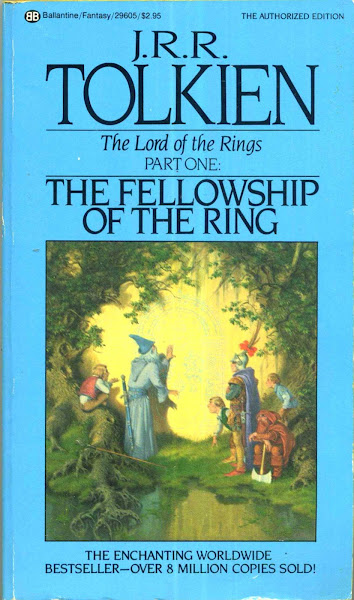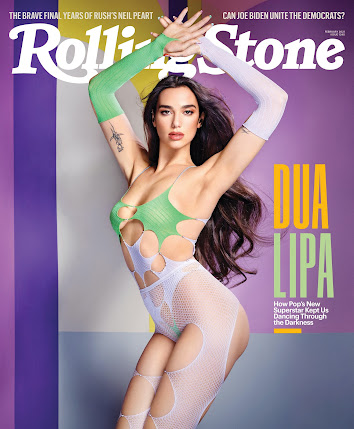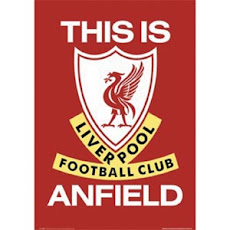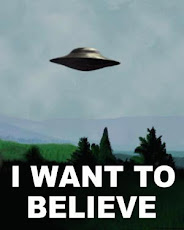Where have you gone, Larry Bird? A nation turns its lonely eyes to you. Wo-oh-oh.
- transcribed from the ancient texts of Paulus Simonus
While there is no shortage of “the next Michael Jordans” in the National Basketball Association, Bird watching has become almost extinct. At least for American Caucasians who are suddenly lost in transition.
While Dirk Nowitski, Andrew Bogut, Andrea Baragnani, Andrei Kirilenko, and Peja Stojakovic among many others have made a case for the Great White Hope; they are however European or Asian (the land from down under belongs to the Asian continent).
So does that mean that the American Caucasian is ever more an endangered specie?
A year ago, the Charlotte Bobcats’ Adam Morrison who was then with Gonzaga and the Orlando Magic’s JJ Redick who was with Duke were their respective program’s main men as America was riveted to their personal duel en route to an NCAA finals berth. Morrison towed his Bulldogs’ leash past Redick towards a showdown with Florida where his team crash and burned in the final minutes. Between the Morrison and Redick, it was the Gonzaga alum who looked like a refugee from the Jefferson Starship who was unfortunately tagged as the next Larry Bird; the next in a long-line of models rolled out of the halcyon days of Hoosier hysteria when the NBA’s landscape was snow white and the only black was the Chuck Taylor high-tops that was de rigueur.
Unfortunately, the typical NBA player is not spared from a world obsessed with profiling and pigeonholing.
The African-American player was said to be all razzle-dazzle slamma jamma dunk-o-rama players. Physical specimens whose worth was measured by their ability to jump over seven-foot centers in a single bound.
Europeans were chain-smoking bearded guys whose actions on the court were so robotic and clumsy. They were considered to be soft players who eschewed the alligator-wrestling pond (as former Chicago Bulls assistant coach Johnny Bach described the shaded lane) and preferred to bomb from the relative safety of the three-point arc.
Woody Harrelson personified the white American baller in that moronic movie “White Men Can’t Jump.” Although they described to be slow and could jump no higher than a phone book, they were tagged as smart since they could make their free throws, issue some dope passes, and basically were the original big fundamentals before Tim Duncan co-opted the nickname.
Turns out they were as wrong as Dick Cheney on a bird-shoot.
There were players like Michael Jordan and Earvin “Magic” Johnson who were such complete players, second generation Oscar Robertsons whose names were in every stat column.
As for the Euros? Well, there is a reason why it has a bigger value than the dollar.
Georgi Glouchkov where have you gone?
Dirk Nowitski is not only the hands down favorite to win the 2006-07 Most Valuable Player Award (sorry, Kobe, your late season surge notwithstanding, Dirk has been consistent the past two years but he has made his team every bit better as well). The Memphis Grizzlies’ Pau Gasol despite being on the trading block is still one heck of a player on a sucky team. Andrei Kirilenko on the other hand is no doubt the face of the Utah Jazz franchise post-John Stockton, the poster boy for small white dudes who was a throwback in more ways than one (check out those short shorts circa pre-David Stern).
As for the white American player?
For the last three years, there have been no white American white hoopsters in the All-Star Game. In the last 10 years, only five have made the All Star teams: Tom Gugliotta, John Stockton, Christian Laettner, Brad Miller, and Wally Szczerbiak. Of those five, the first three have retired.
Let’s break it down:
• Of the 450 players in the NBA, there are over 80 who carry non-American passports.
• The remaining 350 are Americans with only around 39 who are Caucasians born in the continental U.S.A.
• And of 39, only 19 of them have played at least 7 years of pro ball.
• Of those 39 players, only two are averaging more than 14 points per game: the Chicago Bulls’ Kirk Hinrich currently with 15 points per game and the Memphis Grizzlies’ Mike Miller averages 14.1.
• The Portland Trailblazers have four American Caucasians in their roster while the Grizzlies, Miami Heat, Indiana Pacers, Phoenix Suns, and Los Angeles Lakers all have three apiece.
• Two teams, the Toronto Raptors and the Detroit Pistons don’t have any American Caucasians in their line-ups.
• But curiously, nearly two-thirds of the team coaches are white.
• For NCAA-philes, the Kansas Jayhawks and the Florida Gators have the most number of alums in the League with four each. Kansas has the Bulls’ Hinrich, the Cleveland Cavaliers’ Scott Pollard, the Trailblazers’ Raef LaFrentz, and the Seattle Supersonics’ Nick Collison while Florida has the Heat’s Jason Williams, the New York Knicks’ David Lee, the Grizzlies’ Miller, and the San Antonio Spurs’ Matt Bonner.
ESPN analyst and former NBA player Tim Legler laments the apparent demise of the American white player. “It’s sad that the perception of the American white basketball player has become a reality,” frowns Legler who was a former three-point shooting champion with the Washington Bullets. The tags of “too slow” and “can’t jump” seem to have been the kiss of death of the white American. Their white European counterparts are not only just as schooled, but also in many ways more mobile and taller.”
Former NBA All-Star and original Dream Team member Chris Mullin grew up in Brooklyn where he went up against many of the borough’s top black players and held his own. Now the General Manager of the Golden State Warriors where he starred, Mullin realizes it was that grim determination to succeed and be accepted that caused him to take the subway everyday to Bronx and Harlem to do battle with the black stars that were beginning to populate and dominate the playground.
Legler agrees, “Now you don’t have that anymore. Kids are steered towards other sports like baseball and football. "I see it at summer camps. The makeup and attitude of the white kids has changed so much. No question it's the parents and their peer groups talking them off of it. A black kid of average talent in elementary or middle school is much more likely to be encouraged. A white kid of equal talent is going to move to baseball or something non-sports. They totally get discouraged to travel that athletic path, and it's been happening for years.
"My father begged me to not play basketball. I was a really good baseball player, and he thought I had a better chance at playing in the major leagues. But I loved basketball. For a white player to succeed in basketball, he's got to have a backbone. He's got to have that competitive mentality and play with a chip on his shoulder."
Conversely, African-Americans are experiencing the same in Major League Baseball where the game has become the domain of American white boys and Hispanics.
Some basketball analysts point to the Dream Team’s European exploits as a pivotal moment in the expansion and popularity of basketball all over the world. Even South Americans like Argentine Manu Ginobili admits the heavy influence of Michael Jordan in his game.
Who would have thought that Spain, the land of two of the world’s premier football clubs FC Barcelona and Real Madrid would also have the world’s basketball team as Pau Gasol and Juan Calderon led their country to the Gold Medal in the last FIBA World Basketball Championship?
And in the former states that once comprised the Republic of Yugoslavia are still known as the European version of Hoosier-ville having brought over players like Toni Kukoc, Vlade Divac, Drazen Petrovic, Dino Radja, and Peja Stojakovic to name a few.
The world has caught up to America in basketball and not only are Americans feeling the blues after getting their behinds handed back to them over the last few years, but so have the white Americans.
For Mullin, the time that he played seems like the last hurrah for whites. Aside from himself, there was the immortal Larry Bird and his teammates Kevin McHale and Danny Ainge, there was Seattle and Phoenix’s Tom Chambers, Cleveland’s Mark Price, Utah’s Stockton, Denver’s Kiki Vandeweghe, Charlotte’s Rex Chapman, and Miami’s Dan Majerle among others. “These guys made a huge impact on the game,” glowed Mullin who also starred for the Indiana Pacers under Bird.
In a 1997 article in Sports Illustrated, it was postulated that the lack of white stars in the NBA has caused a "white inferiority complex." As a consequence, the next white player with a hint of promise would always be tagged as “the Great White Hope” in the vein of Larry Bird who with each passing season seems to resemble one thing – the Only White American Hope.
In the Sports Illustrated article, then New Jersey Nets swingman Keith Van Horn admitted that since being “outted” in high school, he felt the burden of being compared to Bird when in fact, he was comparing his game to a black player, later-Seattle Supersonics player Derrick McKey. “It was hard,” revealed van Horn. “Eventually, it sets you up for failure when you do well but not as well as Larry Bird.”
After a sterling collegiate career and a stint with the Dream Team, Christian Laettner had a couple of good years with the Minnesota Timberwolves before he became a journeyman checking in with teams like the Atlanta Hawks and the Washington Wizards among others. The ever-loquacious Charles Barkley’s verdict on Duke’s one-time Golden Boy, “The only thing Christian Laettner and Larry Bird have in common is they both pee standing up.”
Judge, jury, and executioner.
With the Bobcats’ Morrison and the Magic’s Redick respectively scoring a paltry 12.3 and 6 points per game in their rookie season, it looks like the “next Great White Hope” has already been hung on the University of North Carolina’s freshman sensation Tyler Hansbrough.
And the cycle continues.
Tower Sports All-time White American NBA Team:
We have decided to divide the NBA into two eras with the demarcation line during the rookie year of Larry Bird in 1979-80.
So on one hand, it’s from the George Mikan years all the way to Dave Cowens and on the other, it’s from Larry Bird up to Mike Miller. Each line-up is divvied by positions with a 16-man roster. The line-ups aren’t purely based on stats but team chemistry and what they bring to the game.
1979-80 season up today:
Centers: Brad Miller, Bill Laimbeer, Mark Eaton, and Bill Walton
Forwards: Kevin McHale, Larry Bird, Tom Chambers, Chris Mullin, and Mike Miller, Jack Sikma
Guards: Mark Price, John Stockton, Dan Majerle, Danny Ainge, Jeff Hornacek, and Brent Barry
Coach: Phil Jackson
Honorable Mention: Christian Laettner, Steve Kerr, Jason Williams, Scott
Skiles and Rex Chapman
Scouting report: This team has size, can shoot from the stands if need be, and can play hard-nosed defense. And please… no jokes about these white boys not being able to jump. Tom Chambers, Mike Miller, Thunder Dan, and Brent Barry will tomahawk you into youtube immortality if you’re a step to slow.
Offense: Now if there was any team to run Big Chief Triangle’s offense then this team is it. They’ve got the players to run the post-offense with Brad Miller and Bill Walton and the myriad of cutters and spot up shooters to make the opposition pay.
They can hurt foes too by drawing them out to the three-point line where its harder to defend a player then zip a pass to a cutter through the lane or beat the player off the dribble with some nifty footwork or feints.
Playmaking: Now perhaps save for the Black Hole of Boston and Utah’s Mark Eaton, if you’re not paying attention, the game might suddenly resemble dodgeball as the rock bounces off your head or your chest with some of the game’s best ever passers in this line-up. Players like Chris Mullin, Dan Majerle, Brent Barry, and Danny Ainge can take it to the basket on a series of cuts or drop passes.
Defense: You’ve got some terrific rebounders, shot blockers, and position defenders in this line-up. And if all goes wrong, then there’s that human roadblock in Mark Eaton to teach finger-wags like Dikembe Mutombo a thing or two about rejection.
To say that these boys play like Europeans would be total disrespect to them. The Euros play like these boys can.
Sidebar: Larry Bird
Some people have that defining moment that changes lives. But all-time great ones like Larry Joe Bird seem to have a scrapbook full of them.
Was it leading the Indiana State Sycamores to the NCAA Finals?
Was it winning the Rookie of the Year Award en route to leading Boston in what was then the single largest one year turn around in history (before David Robinson eclipsed the mark with the San Antonio Spurs)?
Was it beating Los Angeles after that call to arms that turned the 1984 Finals around?
Was it his scintillating run of three straight Three-Point Shooting Championships during the All-Star Weekend?
Was it winning three straight MVP Awards?
Was it the Willis Reed moment against Indiana in 1991?
Or was it his stint with the Dream Team in Barcelona arguably his last hurrah as a player?
Or was it coaching the Indiana Pacers to the NBA Finals in 2000 against the Los Angeles Lakers before ultimately falling short?
Perhaps the best testament to Larry Bird is even black players like Kevin Garnett are compared to his all-around game. But still none come close. The Great White Hope is still the Only Hope.
1946-1979 seasons:
Center: Dolph Schayes, Dave Cowens, George Mikan, Tom Boerwinkle,
Forwards: Rick Barry, John Havlicek, Bobby Jones, Jerry Lucas, Gail
Goodrich, Jerry Sloan, Dave DeBusschere, Bob Petit,
Guards: Bob Cousy, Pete Maravich, Jerry West, Bill Sharman
Coach: Arnold “Red” Auerbach
Honorable Mention: Harry Gallatin, Joe Fulks, Dan Issel, Paul Arizin, Paul
Westphal, Tom Heinsohn, Ed McCauley, and Bill Cunningham
Scouting Report: The years from 1946-79 really covers a lot of ground and players particularly the time when the NBA was young and lily-white. Many of the names you’ll find on the team are from the latter part of the coverage when the game was closer to what it is today as opposed to the more grounded played when the Minneapolis Lakers ruled the roost. That doesn’t mean that the players were softer then. Not necessarily. In fact, they had to endure long bus or car rides to games, played in bad shoes, bad weather, and to ugly crowds. The physical training and style of coaching was at its best simple yet highly effective up to this day. There were times when courtside was separated from the stands by chicken fence wire to prevent the fans from hurting the players. It was tough leaving out favorites like the Kangaroo Kid, Billy Cunningham and Paul Westphal who had far superior stats to Jerry Sloan and Bobby Jones. But you need guys who can stop foes from scoring. It certainly isn’t enough to trade baskets to wins games; you need stops.
Offense: Four names. Rick Barry, Gail Goodrich, Jerry West, and Pistol Pete. Four people to shoot the daylights out of the gym. And we haven’t even talked about Hondo or Jerry Lucas.
Playmaking: The game’s original showmen in Bob Cousy and Pete Maravich aren’t here for the halftime tricks show. They are here because they can play. And more importantly, pass the rock. The Cooz has a lifetime average of 18.4 points, 5.2 rebounds, and 7.5 assists per game. And the Pistol has 24.2 4.2, and 5.4 respectively. And their numbers got better during play-off time. What makes them deadlier is that they aren’t one-dimensional; they can drive to the basket and make a living off drop passes and other dimes. And up front, with Dave DeBusschere, Hondo, and Dave Cowens and Dolph Schayes they have passing-minded players as well.
Defense: But perhaps the best word to describe this line-up is: tough. Plenty tough. Maybe even dirty tough. Not dirty players out to hurt others but those who’re willing to hustle for the plays and do the dirty work that doesn’t make the stat sheet. And these guys have the floor burns and the broken noses to prove it. They were competitors with an ironclad will who would standout in today’s NBA. Now while they may not have any shot blockers supreme, what this team does is challenge every shot. The great thing about All-Star teams is they play the game they way it should be.
Now these boys can also rebound with the best of them. Tom Boerwinkle might not have a Hall of Fame career, but in his years with the Chicago Bulls, he was the certified man in the middle. Along with Dave Cowens, George Mikan, Hondo, Jerry Lucas, and DeBusschere, they can guard the shaded area as well as anyone in any time.
Sidebar: John Havlicek
You’re definitely in good hands with Hondo. Selected by the Cleveland Browns in the 1962 NFL Draft as a wide receiver, the former Ohio State Buckeye chose to go to the Boston Celtics where he served as the chief caretaker of the dynasty when Bill Russell rode off to the sunset. He led then Celts to the 1974 & 76 championships before calling it quits two years later.
Even when Russell was still the main man for the Celts, Hondo was a primetime player on both ends of the floor (see the steal against Philadelphia and the shot against Phoenix in 1976).
His lifetime stats of 20.8 points, 6.3 caroms, and 4.8 assists are healthy by any era.
Tuesday, June 5, 2007
The White Stripes
Subscribe to:
Post Comments (Atom)









No comments:
Post a Comment